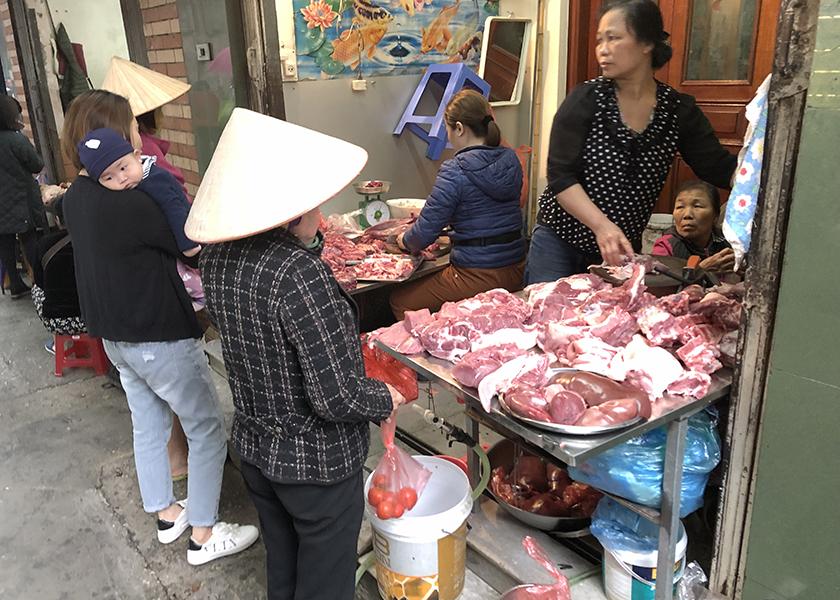It’s Anyone’s Game: How Will the U.S. Pork Industry Diversify Pork Exports?

Record-breaking pork exports in 2020 have been a welcome reprieve in a year that’s been full of twists and turns. But as pork producers look forward, the question remains. Is it possible to continue this growth in our export market? What happens when China rebuilds their herd and imports to the world’s largest consumer of pork slow back down?
Two new reports form the National Pork Board demonstrate opportunities that may diversify U.S. pork exports in two emerging markets: Vietnam and the Philippines. The two new pork market assessments were prepared by Gira, a global research firm, with funding from the Pork Checkoff and the USDA Foreign Agricultural Service Emerging Markets Program.
“Right now, the markets are anyone's game because of China, so now is the time to position your product in these markets whilst you've got less competition and build that reputation that will give you your position in five years when the global markets are going to be really competitive,” explains Rupert Claxton, Gira meat director. “The important thing now is to pay attention to the detail and then build up to it, not just to plow in there with as much as you can right now.”
Where will the market move?
The reports share critical insights on how U.S. pork can position itself for long-term success in the Vietnamese and Philippine markets – two Asian markets with increased demand for pork consumption anticipated in the next decade.
“We're in very uncertain times – whether it's the result of an animal disease, or the result of a human health disease, or the financial things that seem to affect exports as well,” says Norman Bessac, vice president of international marketing for the Checkoff. “And I think in uncertain times, people grasp for some sort of direction and certainty to where the market is going to move.”
This has been a record year for exports, up 15% to 16%, in both volume and value, Bessac says. Although he doesn’t see that kind of volume and value increase continuing into the future, he expects a 2% to 3% increase can continue if the industry focuses on value first and brings volume along with it.
“I think these studies are absolutely critical for people that are in the exporting world, because everybody understands that we've shipped a ton of product to China, and that's good. The risk is China is not going to be there with the type of volume that they had for the next five or six years,” Bessac says. “Our China study and market assessment last year shined a light on that. The key now is where else can we develop that business and that diversity into the market?”
U.S. pork producers identified diversification of exports as a top priority. Bessac says these reports will help exporters position the U.S. pork industry as a supplier of choice in both countries.
According to Gira’s research, as Vietnam and the Philippines recover from COVID-19 and ASF outbreaks, pork consumption and import demand will increase. This projected increase is counter to other key markets, where pork consumption is expected to shrink by 2030. The predicted growth in these two markets is based on the rise in the middle classes and pork’s popularity in Vietnamese and Filipino cuisines.
“Both the Philippines and Vietnam are great opportunities for U.S. pork, but are in very different situations,” Claxton says. “There is an immediate opportunity for imports now as there is a shortfall in the supply of imported pork in both markets because China is effectively buying or bidding up what's available on the world market and is pricing buys elsewhere out of the market. We know that pork is important culturally in both places, so it’s a great time to be looking to see whether the U.S. is in a position to establish itself to build the relationships that it will need going forward to become a really reliable supply partner for these markets.”
Greatest risk or opportunity?
“Exports are one of the greatest opportunities for our industry’s future success, but it’s also our greatest risk if we rely too heavily on a few international markets,” says Curtis Meier, a pork producer from Iowa.
Over the years, Meier has traveled to many countries representing the U.S. pork industry and believes it’s critical for producers to do their part to build relationships in foreign countries.
“We're really not doing these promotions overseas to sell pork, we're going to these countries to put a producer's face with our product. To me, that's very important,” Meier says. “We get a lot of compliments that we are actually bringing producers to these countries. It's great to put the face of a producer on our product.”
The U.S. Meat Export Federation (USMEF) report that exports accounted for nearly 30% of U.S. pork production from January to September, with over 20% of production exported to just three markets – China, Mexico and Japan.
“It’s very clear that for the U.S. industry to thrive, you have to make better use of that export outlet,” Claxton says. “The two markets selected are clearly the two best in that developing market category for pork.”
These new reports build on the success of the Pork 2040: China Market Assessment, released in 2019, that identified ongoing volatility and short-term opportunities in the world’s largest pork market.
More from Farm Journal's PORK:
U.S. Pork Exports Maintain Record Pace
China’s Growing Need for Protein: New Study Excites U.S. Pig Farmers







